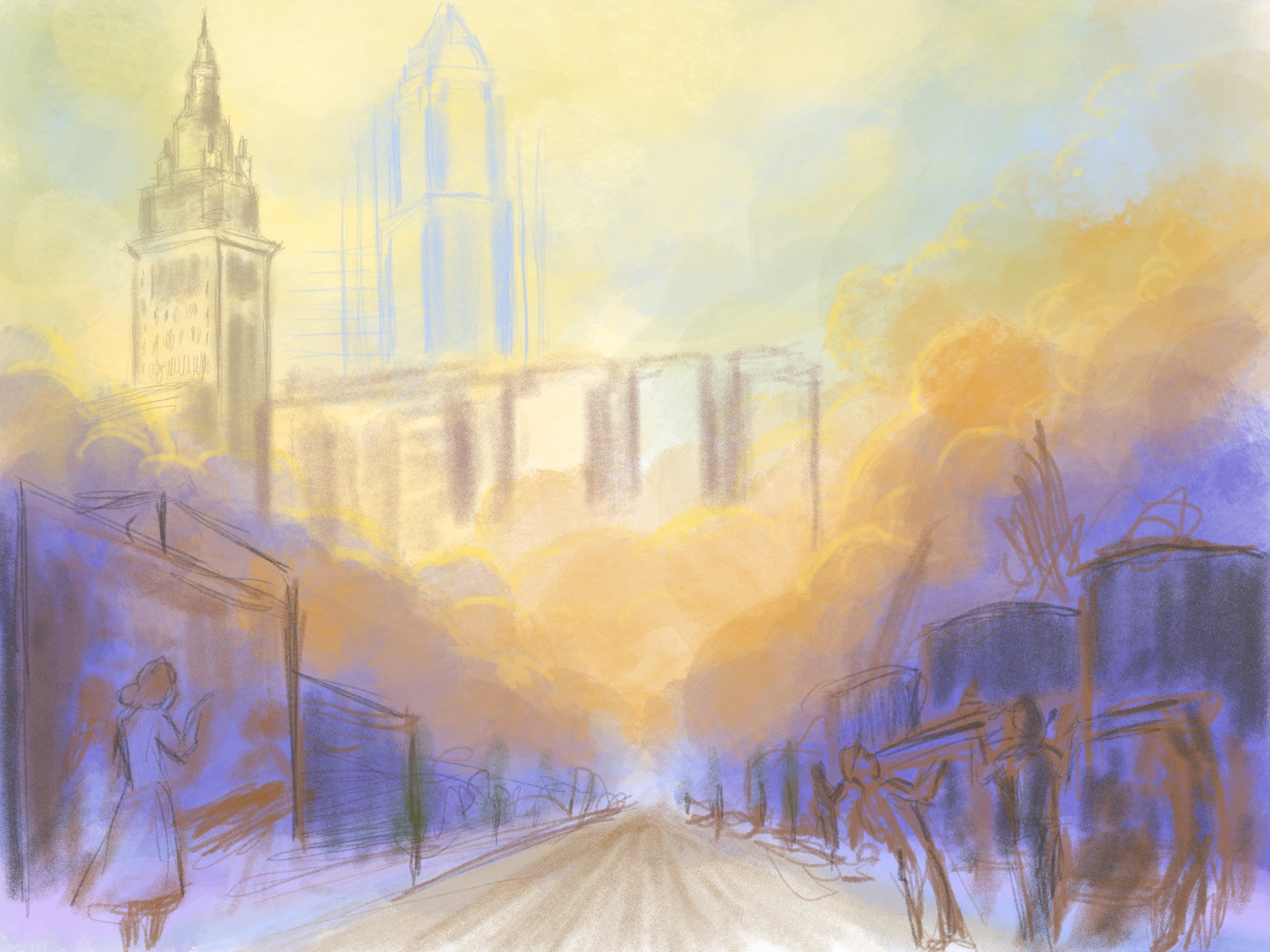
Creativity Works Internship Mural Project with Shaker Historical Society Museum
Project Proposal
This mural will honor and illuminate the often-overlooked impact of the Black diaspora during and after The Great Migration, specifically focusing on how Black Americans helped shape, build, and revolutionize cities like Cleveland, Ohio. Despite facing harsh residential segregation and systemic discrimination, Black individuals and families persevered, creating new opportunities not only for themselves but for future generations. Their hard work and determination laid the foundation for the thriving, diverse urban landscape we see in Cleveland today.
The composition of the mural will commemorate the past, acknowledge the present, and look with hope and pride toward the future. It will serve as a tribute to the legacies built by everyday people, celebrating their strength, resilience, and contributions to the city's cultural and economic fabric.
This project is deeply personal to me, but its importance extends far beyond. It represents a shared history—not just Black American history, but Ohioan and American history. By visually marking this pivotal chapter, the mural invites reflection, recognition, and celebration of those who, in migrating from the oppressive conditions of the South, actively resisted racial injustice and helped build vibrant, resilient communities in the North while facing oppression.
In telling their stories, this mural becomes more than public art—it becomes a community monument, honoring the past while inspiring a more inclusive and aware future for Cleveland and beyond.
This mural project was supported by the Creativity Works Internship program at the Cleveland Institute of Art and was made possible by the generous support of the Fenn Educational Fund and the G.R. Lincoln Family Foundation.
Historical Research and Ideation Stage!
Here I am seen going through Shaker Historical Society Museum’s Historical documentation of Shaker Heights, OH, and Cleveland, OH, memorabilia and artifacts. The documents ranged from the 1910s to the 1990s. Most of the content consisted of images of the greater Cleveland area’s rapid transit system, which connected Shaker Heights to the city of Cleveland and other surrounding suburbs.
I viewed several photographs that featured Terminal Tower, the rapid transit system, and early steel industrial factories. Between 1910 and 1930, Cleveland’s population grew by about 60%, reaching 900,429 residents. This growth was largely due to the Great Migration, during which Black Americans left the South in search of better opportunities.
At the time, the two largest economic sectors in the city were the medical field and the steel industry. These were among the few industries where Black Americans could earn a decent wage to support themselves and their families.
Building of the Finalized Composition!
When building the composition for the mural, I wanted the Terminal Tower to be at the center, creating a strong focal point. Placing the building in the middle was intentional, reflecting its historical role in connecting the greater Cleveland metropolitan area.
On the right side of the composition are steel workers, and on the left, medical workers—all depicted at work to highlight their contributions to the city's growth and development.
The color palette also carries meaning. Purple represents people at work and transitions into orange and smoky clouds, reinforcing the industrial theme. Light green, blue, and yellow symbolize hope and a bright future for everyone in the city. The use of pastel tones throughout the mural represents hope and perseverance.
Left Side - Ideation Sketch
Color Palette for the Mural!
Finalized Composition!
1st Finialized Draft Compositon Sketch!
Right Side - Ideation Sketch
